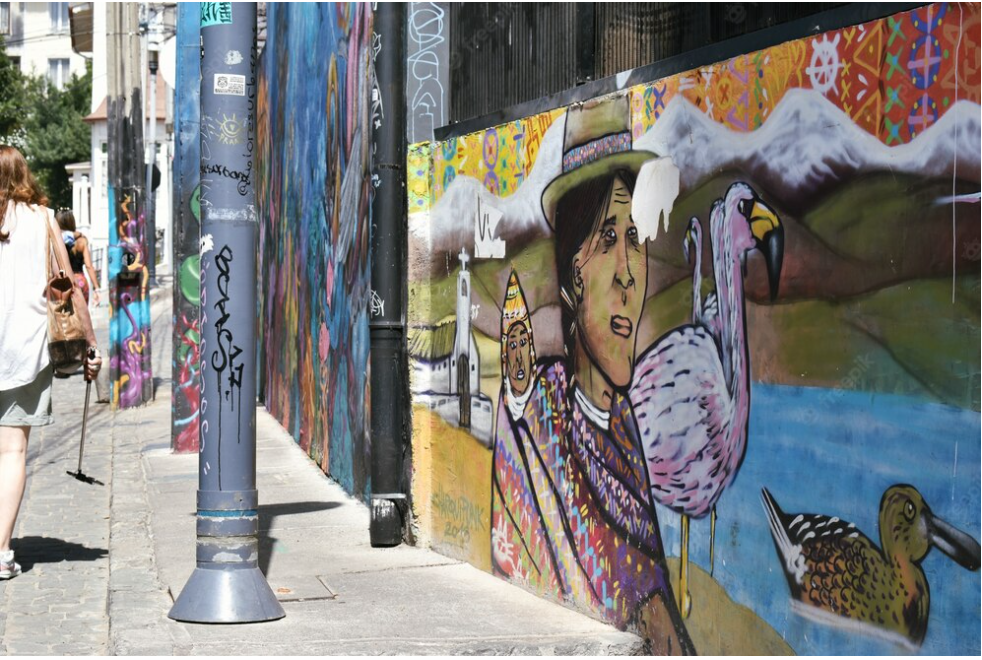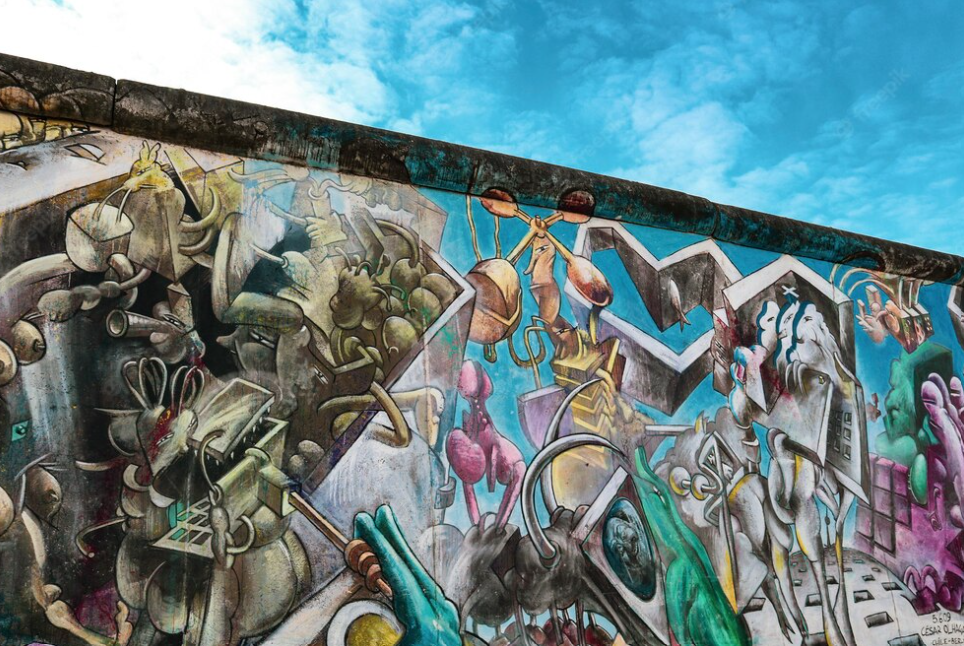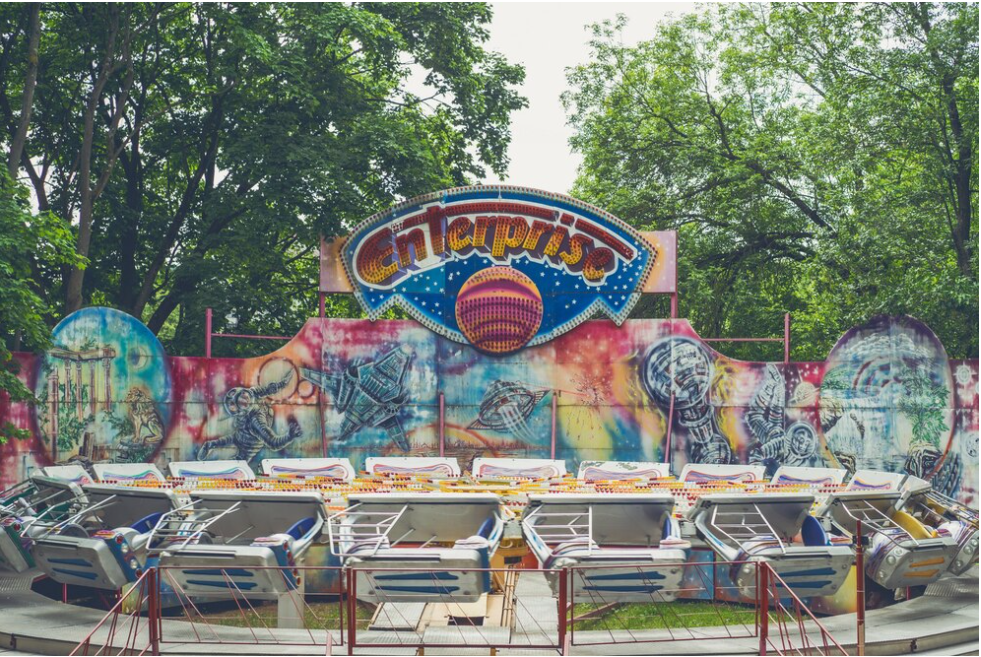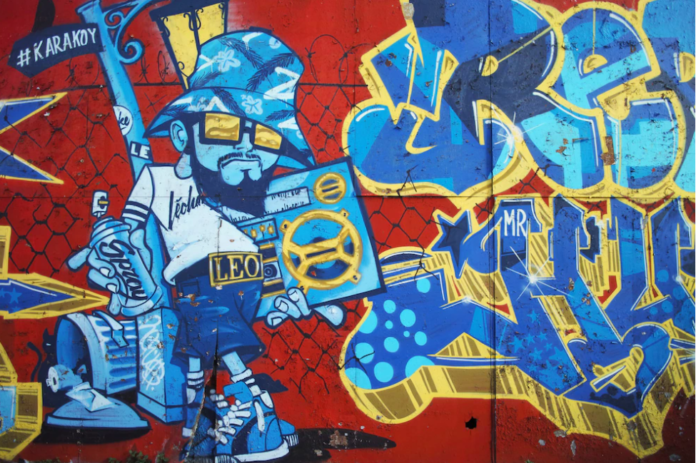Street art and graffiti culture have been around for centuries and are some of the most vibrant expressions of modern art. From bright and bold murals to intricate and detailed pieces, street art and graffiti have become integral to urban culture. In this article, we’ll take a look at the history and evolution of street art and graffiti culture, the different types of street art, the benefits of street art, and the challenges of graffiti culture.
History Of Street Art And Graffiti
Street art and graffiti have a long and complex history. From the ancient graffiti of Pompeii to the modern street art of Banksy, these two forms of art have been around for centuries, but it wasn’t until the 1970s that they started to become widely accepted and appreciated.
The earliest examples of street art can be traced back to the Paleolithic era, when ancient cultures used to etch and paint on caves and rocks. In the Middle Ages, street art was used for advertising events, such as festivals and fairs. Later, during the Renaissance and Baroque periods, street art was used to promote religious and political messages.

In the late 19th century, the invention of spray paint and other graffiti materials opened up a world of possibilities for street artists. Graffiti was often used to tag walls and express political opinions, although it was still largely viewed as vandalism.
Many iconic graffiti pieces were created in the late 1960s and early 1970s. During this time, graffiti artists were drawn to the anonymity and freedom of the streets. They began to use graffiti to express their feelings, opinions, and political views. As the art form grew in popularity, more and more artists began to explore the medium, experimenting with different styles and techniques.
In the 1970s, New York City was the center of the street art and graffiti revolution. Graffiti artists like Taki 183, Futura 2000, Fab 5 Freddy, and street artists like Keith Haring and Jean-Michel Basquiat, used the city as their canvas to express their ideas and visions. The growing popularity of hip-hop culture also helped to bring street art and graffiti into the mainstream.
In the 1980s, street art and graffiti began to spread to other cities around the world, particularly in Europe and South America. The work of a new generation of street artists, such as Banksy, began to gain recognition and appreciation. While some street art is still seen as vandalism, it is now widely accepted as a legitimate art form.
Street art is often a reflection of the local culture and community and can include everything from political statements to social commentary. Graffiti, on the other hand, is often used to express messages of rebellion and non-conformity.
Street art is often characterized by its bright colors, bold designs, and political or social messages, and it has been used to transform public spaces and challenge mainstream cultural norms. Street art is often distinguished from graffiti by its focus on visual aesthetics and its use of a broader range of materials and techniques, including spray paint, stencils, wheatpaste, and stickers. These street arts are mostly sanctioned and outsourced by local authorities.
There are several benefits to street art and graffiti culture. It can provide a platform for artists to showcase their work and express their ideas, it can help to boost local economies, and it can be used to beautify and transform public spaces. Street art and graffiti can also be used to spark conversations, provoke thought, and provide a sense of identity and pride for local communities.
The Challenges

Graffiti culture is not without its challenges. Despite its increasing mainstream acceptance, graffiti and independent street art remain controversial. Many view it as vandalism and a form of urban decay, and many laws are in place to prevent it. Many cities have implemented strategies to combat graffiti vandalism, such as regular clean-up efforts, increased surveillance, and harsher penalties for offenders. Additionally, many graffiti artists have experienced difficulties accessing public spaces due to restrictive laws and gentrification.
In response to this perception, some cities have attempted to regulate graffiti and street art, while others have embraced it as a way to add character and personality to their communities.
In some cases, graffiti and street art may be protected as free speech, while in other cases, property owners and government officials have the right to remove or cover up these types of artworks.
One of the main arguments in favor of graffiti and street art is that it allows for creating public art that is accessible and free to everyone rather than being restricted to the elite art world. Many graffiti and street artists also argue that their work helps to beautify and revitalize urban spaces, and serves as a platform for self-expression and social commentary.
Famous Graffiti And Street Art From Around The World
- Banksy – One of the most famous graffiti and street artists of all time, Banksy is known for his anonymous identity and politically charged works. His street art, which often features satirical and thought-provoking messages, has been featured in galleries and museums around the world and has even inspired imitators and copycats. Some of his most famous works include “Girl with Balloon,” “Flower Thrower,” and “Kissing Coppers.”
- Jean-Michel Basquiat – A New York-based graffiti and street artist, Jean-Michel Basquiat rose to fame in the 1980s with his distinctive style, which combined elements of graffiti, primitive art, and abstract expressionism. His works, which often explored themes of race, politics, and social justice, have been exhibited in galleries and museums around the world and have inspired a generation of artists.
- Keith Haring – Another famous graffiti and street artist from New York, Keith Haring was known for his bold and colorful works, which often featured simple, childlike figures and symbols. Haring’s work was inspired by the graffiti subculture of the 1980s, and he used it as a way to comment on social and political issues of the time.
- Os Gemeos – A Brazilian graffiti and street art duo, Os Gemeos (which means “the twins” in Portuguese) are known for their distinctive style, which combines elements of Brazilian folk art with graffiti and hip-hop culture. Their works, which often feature bright colors and surreal imagery, can be found on walls and buildings around the world.

Img src – freepick.com - Shepard Fairey – An American graphic designer and street artist, Shepard Fairey is best known for his “Hope” poster of Barack Obama, which became an iconic image of the 2008 presidential campaign. Fairey’s work, which often incorporates elements of pop art and propaganda, has been exhibited in galleries and museums around the world and has inspired a generation of artists.
These are just a few examples of famous graffiti and street art from around the world. There are many other talented and influential artists working in this field, and their works can be found in cities and communities around the globe.
Tags – The Fascinating World of Graffiti and Street Art, History, Culture, and Significance of These Graffiti and Street Art
